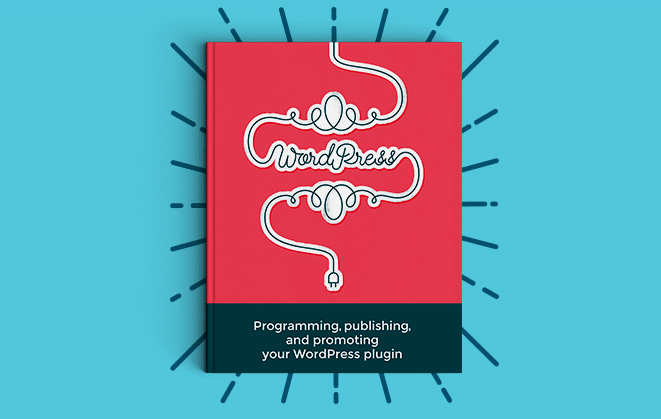
If you’re a web or graphic designer, you know how fickle your job is, especially if you work as a freelancer. This month you could be drowning from work opportunities, just trying to figure out which projects to accept. But next month, you may have to deal with absolute silence, begging for work to come along.
There’s a solution to this uncertainty: find a side business to ensure you earn cash on a regular basis. Even if you have a regular nine-to-five job, a side business or a part-time gig means you’ll have extra money for traveling, shopping, or saving an emergency fund. It’s also an excellent way to break out from the monotonous cycle of daily work.
A lot of designers who want to try a side business usually get stuck on one thing: finding the right gig to fit their skill and schedule. That seemingly elusive “idea” makes them feel like there’s a barrier stopping them from earning extra money. The good news is that you have the digital world on your side. If you have a computer or a laptop, you can pick up a lucrative side business anytime, anywhere.
To get that problem out of the way, here are 12 side business ideas any designer can try.
1. Sell digital files
It’s likely you have a folder on your computer brimming with old and unused projects. Some of them may be illustrations or templates vetoed by your previous clients. Others may be personal designs you’ve done in your spare time. Instead of letting your work go to waste, sell them on design specialty sites like Creative Market and ThemeForest.
You can retail logos, icons, and illustrations at Creative Market. You can sell your web templates at ThemeForest. Just be sure to triple check your work before selling anything online. You wouldn’t want to sell something that is already copyrighted by a previous or current client.
Design elements
Remember, if people can download it online, whatever it is, it can be sold. If you don’t have old or unused files anymore, make some. Devote some time to designing new icons, illustrations, stock vectors, templates, and anything else you can create online. There’s always a huge demand for design elements, especially those that can make complicated steps simpler and faster. Consumers look for time-saving products all the time. If your work can supply this demand, you’ll earn a lot.
Photography
If you want, you can shy away from anything design-related. If you’re skilled in photography, you can sell stock photos instead. If you don’t have a website to sell your products (which you should work on ASAP), there are tons of marketplaces that can display your work, mostly for just a small fee. Check out iStockPhoto to learn the best way to advertise and sell your stock photos.
2. Test and review online products
This is an excellent side business if you’re good at giving fair and decent thoughts and opinions. Testing online products means giving honest feedback for someone else’s work. A lot of designers and entrepreneurs look for people who can assess their work’s usability without bias. You can get paid up to $50 per test. Look for this type of work on:
3. Be a Skillshare host
Skillshare is a marketplace for different types of classes and tutorials. It’s an online community where experts can ask to host a class to impart a particular skill for a fee. Your “salary” will be based on the number of online students who register for your class.
It’s important that you do your research on the topic of your choice. It’s smart to focus on a single subject rather than undertaking a broad topic that can go in different directions. You can build a good reputation if you can show your class that you’re an excellent host.
Just keep in mind that it’s not permitted to sell or advertise your own product or service to your students.
4. Use your expertise to become a consultant
Consultants are highly valuable people because they have first-hand knowledge about their field of expertise. If you’re highly-skilled in what you do, you can be a freelance consultant. As you teach other designers to become better, they’ll pay you for your knowledge, and maybe even some of your services.
If you’ve taught or trained other designers before, being a consultant is a natural next step. Your clients will pay not just for the advice you share, but also for the direct help you give to accomplish their goals.
A good example of a lucrative consulting business is Braid Creative, owned by Kathleen Shannon and Tara Street. Both have backgrounds in freelance designing, advertising, and writing. Their consulting firm aims to help creatives brand themselves better through their courses and coaching services.
5. Start a design blog
You have a lot of competition in your field. Even if you’re an excellent designer, it’s only a matter of time before someone else becomes as skilled as you are or even better. You need to have an edge to ensure you don’t fall from the success ladder. One way to do so is to blog about your work.
Set up your blog
If you hone your writing skills and use them to talk about your designs, you can improve your brand’s reputation. By writing about your work, you get to show the market that you’re a niche expert. Tackle different elements of design that you enjoy, like typography or color palette selection. Whenever you make bold claims, make sure to back them up, and only share relevant information that you’ve verified.
Through your design and writing skills, you can turn your blog into a resource. Your goal is to generate traffic to your site which will, in turn, generate leads for your products. It will be easier for you to find new clients if you have a blog that will show them the quality of your work.
Be a guest blogger
Having a blog with a favorable reputation means having an opportunity to write for other websites. When you gain a solid reputation as a designer-blogger, you can contribute to popular blogs that pay their contributors from time to time. But even if you don’t get paid in the meantime, the exposure you’ll get can do wonders for your brand. Again, you can drive extra traffic to your own blog and catch the attention of potential clients.
Write an ebook
One of the drawbacks of blog articles is that they’re generally free. It’s almost impossible to find a market that will pay just to read an online article. To avoid this downside, you can publish an ebook instead.
Writing an ebook may seem like a daunting task, but it’s easier than it seems. In fact, most ebooks these days are compilations of relevant and well-written articles compressed into PDF files. This means you can use the topics you’ve already talked about on your blog and just go into more detail for the ebook. If you have a lengthy, unexplored subject you want to share, writing it as an ebook may be better than dividing the topic into multiple blog posts.
You can also showcase your design skills with the format and cover. When you’re done with it, self-promote your ebook on your website and social media accounts to try to increase sales, or even just traffic to your website.
6. Create an eCommerce site
These days, it’s common for designers to open an online shop to sell their work. For a small fee, you can build your own eCommerce site to better market your products. This is a great avenue for you to expand your brand. Apart from selling your digital work, you can also try your hand at something tangible, like shirts, buttons, patches, stickers, or posters.
Check out Society6 or Imagekind to see how you can print your design by client order, instead of mass producing anything.
7. Create your own course
If teaching or coaching doesn’t work with your schedule, you can create courses and sell them to online teachers and students. This is a more scalable gig than one-on-one coaching, since you’re able to send the materials to a bigger group of people. You can create teaching tools in different formats like videos, podcasts, or written modules. The great thing about creating teaching courses is you have a whole spectrum of topics to choose from. You can stick with design subjects or take on sports, art, food, fashion, and so on.
It should be noted that online teaching or coaching can be time-intensive. Apart from the actual session, you need to go through different pre-and-post class routines. Having said that, becoming an online teacher or coach is an excellent way to capitalize a skill you already have without shelling out a huge investment.
8. Organize an event
Much of your work happens online. You create your design using web-based tools. You advertise your work primarily on the internet. You sell your designs on eCommerce sites. Even the community you’re a part of is online. As such, designers always clamor for in-person networking. You can take advantage of this demand.
Host a trade show
Organize a trade show or a networking event for designers. Invite the members of your online community. Ask your respective clients to come as well. Set up space where invited designers and artists can sell their merchandise. Hosting an event can be a win-win situation. You can sell your work in-person while at the same time, build relationships with your fellow designers and potential clients.
Attend a networking event
Alternatively, you may attend and sell your merchandise at other events. Through your online community, you can be updated on possible design trade shows, craft fairs, and the likes. When you find one that suits your business, apply to be a vendor so you can have a booth to display your products.
9. Create a podcast
Yes, there is a bit of a start-up cost for this gig since you’ll need tools and materials to produce a great podcast. But if you already have the right equipment, make it your side business. Naturally, it helps if you already have an online following you can turn into listeners. Otherwise, make sure to release a podcast that is worth listening to, promote it all the time, and eventually you will attract your target market. Once you’re able to generate a regular audience, it’ll be easy to get outside sponsors.
10. Post ads
If you already have an established website or blog, you can sell ads on it. The truth is, ads are how many bloggers make their money. Ad revenue is a big industry, which is unsurprising since there are plenty of products to sell.
You can display ads in multiple ways and earn from each method. By copying and pasting a snippet of code, you can display Google AdSense ads on your site. You may also implement the same technique for ad networks like Carbon Ads.
Another method is to promote an ad on your email newsletter. If you have a podcast, you may sell spots for sponsorships. Sometimes, you can even earn cash by posting a paid ad on Twitter or Instagram. The gist is, the more you share the stuff of others, the more people will share your stuff.
11. Become a virtual assistant
If you’re a jack of all trades, you can work as a Virtual Assistant (VA). One of the best things about this job is you get to do your thing from the comfort of your home. There are a lot of entrepreneurs who look for a reliable assistant. You can check them out on Elance or Upwork.
Working as a VA can also build your own network. You’ll have the opportunity to rub (virtual) shoulders with some VIPs and industry influencers. In general, your employer will provide the tools you need, which means you don’t have to spend money to get the job done.
12. Develop a WordPress theme or plugin
Web designers today usually know a thing or two about coding. If you already have the skills – or even if you’re just starting to learn how to code – developing a WordPress theme or plugin can be a lucrative side business.
The first thing you need to do is find a niche that hasn’t been fully explored yet, and then create a solution for it.
Free ebook: Programming, publishing, and promoting your WordPress plugin
Building a WordPress plugin is a fantastic way to improve your development skills, get involved in the WordPress community, and be recognized as an expert in the field. (Plus, who knows, you might just even make an extra buck or two from it!)
These side business ideas are just the tip of the iceberg. There are a lot more gigs you can do to earn extra cash. At the end of the day, the best side business is a job where you can use your skills, knowledge, and experience as a designer in a time frame and budget you can spare. You only need to find one side business that fits you to a tee, and you’ll have a steady supplemental source of income.



















Comments ( 8 )
MatthewRom
August 21, 2025
I've been exploring terpene-based products https://terpenewarehouse.com/ recently, and I'm deep down enjoying the experience. The scents are rich, typical, and pleasant. They add a nice be a match for to my constantly drill, ration fasten on the feeling ready and atmosphere. A brobdingnagian catch sight of to save anyone who appreciates aromatic wellness tools.
EllisPor
August 19, 2025
I've been exploring terpene-based products [url=https://terpenewarehouse.com/products/bubblegum-og ]bubblegum og[/url] recently, and I'm remarkably enjoying the experience. The scents are rich, natural, and pleasant. They add a outgoing caress to my daily programmed, helping set the feeling ready and atmosphere. A brobdingnagian find to save anyone who appreciates aromatic wellness tools.
Willardinild
August 18, 2025
I’ve been using https://www.nothingbuthemp.net/pages/what-is-thc-beer ordinary on account of during the course of a month nowadays, and I’m truly impressed before the absolute effects. They’ve helped me judge calmer, more balanced, and less anxious from the beginning to the end of the day. My snore is deeper, I wake up refreshed, and sober my focus has improved. The attribute is outstanding, and I cherish the natural ingredients. I’ll positively preserve buying and recommending them to everyone I identify!
TimothySlity
August 15, 2025
I’ve been using [url=https://www.nothingbuthemp.net/pages/where-to-buy-mushroom-chocolates ]Where to buy Mushroom chocolates?[/url] daily seeing that over a month nowadays, and I’m indubitably impressed during the uncontested effects. They’ve helped me feel calmer, more balanced, and less tense from the beginning to the end of the day. My forty winks is deeper, I wake up refreshed, and sober my nave has improved. The value is outstanding, and I appreciate the sensible ingredients. I’ll categorically preserve buying and recommending them to person I be aware!
Scottepize
August 9, 2025
I've been exploring terpene-based products https://terpenewarehouse.com/pages/what-is-cannabis-terpenes recently, and I'm remarkably enjoying the experience. The scents are rich, customary, and pleasant. They tot up a gracious be a match for to my constantly habit, helping set the mood and atmosphere. A brobdingnagian track down to save anyone who appreciates pungent wellness tools.
Scottepize
August 8, 2025
I've been exploring terpene-based products https://terpenewarehouse.com/pages/what-is-the-difference-between-cdt-vs-botanical-terpenes recently, and I'm really enjoying the experience. The scents are well off, real, and pleasant. They add a outgoing touch to my day after day programmed, dollop fasten on the feeling ready and atmosphere. A large hit upon after anyone who appreciates perfumed wellness tools.
Thomasglomb
August 7, 2025
I've been exploring terpene-based products [url=https://terpenewarehouse.com/collections/cannabis-terpenes-diamond ]buy cannabis terpenes[/url] recently, and I'm deep down enjoying the experience. The scents are rich, natural, and pleasant. They enlarge a outgoing be a match for to my day after day programmed, ration fasten on the feeling ready and atmosphere. A brobdingnagian catch sight of after anyone who appreciates aromatic wellness tools.
seo hizmeti
July 13, 2025
Nice post. I learn something totally new and challenging on websites